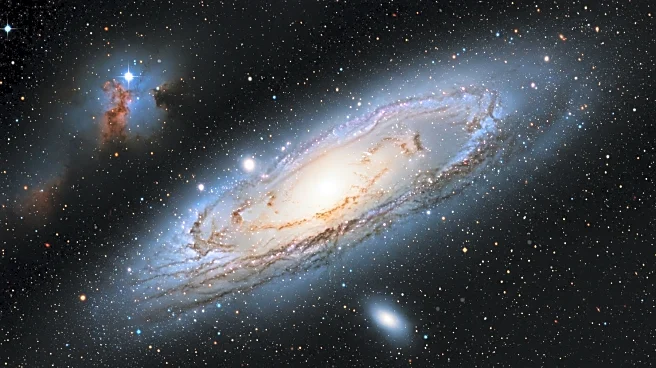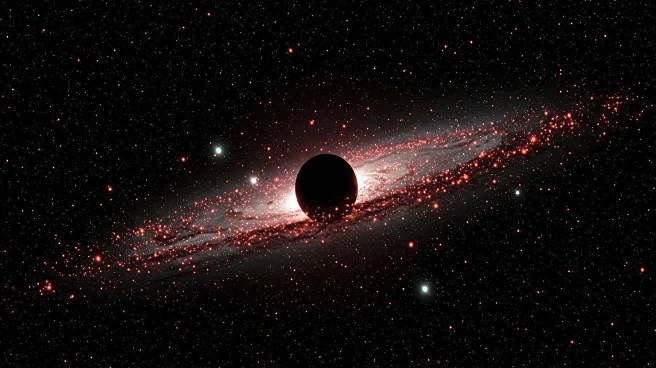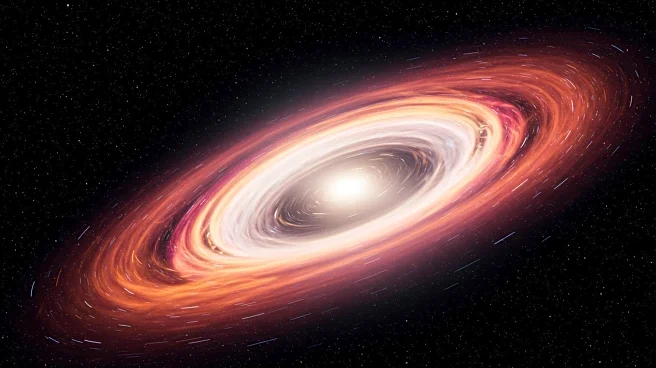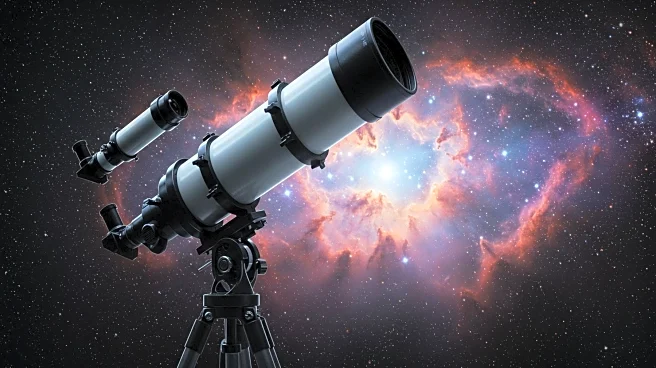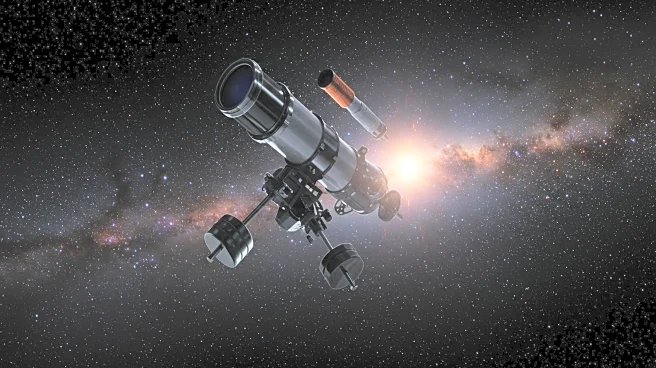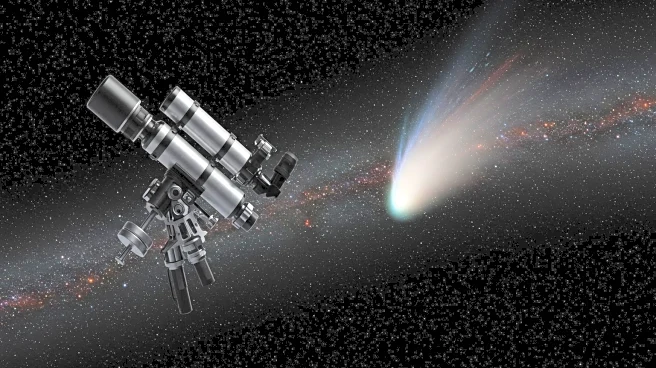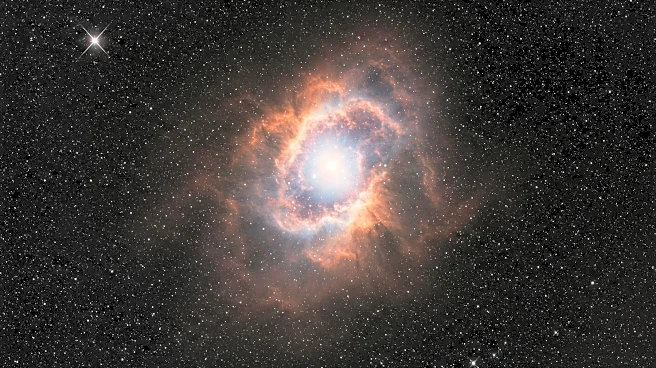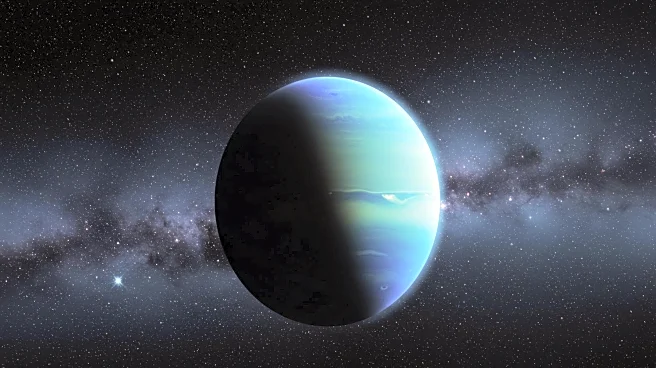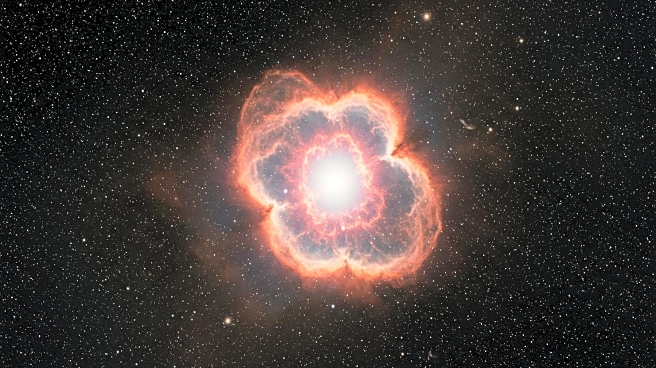What's Happening?
NASA's Hubble Space Telescope has captured detailed images of the spiral galaxy NGC 45, located 22 million light-years away in the constellation Cetus. This observation is part of two complementary programs aimed at studying star formation across 50 nearby galaxies. The first program utilizes Hubble's capability to observe a wide spectrum from ultraviolet to near-infrared light, while the second focuses on the H-alpha wavelength, which is emitted by star-forming nebulae. NGC 45, a low surface brightness galaxy, is of particular interest due to its faint appearance, which results from having fewer stars relative to its gas and dark matter content. These observations are crucial for understanding the formation and evolution of galaxies.
Why It's Important?
The study of low surface brightness galaxies like NGC 45 is significant because they represent a substantial portion of all galaxies, estimated to be between 30% and 60%. These galaxies are challenging to detect due to their faintness, yet they hold key insights into the processes of galaxy formation and evolution. By leveraging Hubble's advanced observational capabilities, scientists can gather data that may reveal new aspects of how galaxies develop over time. This research not only enhances our understanding of the universe but also contributes to the broader field of astrophysics by providing data that can refine existing models of galaxy behavior and structure.
What's Next?
Future research will likely continue to focus on low surface brightness galaxies to build a more comprehensive understanding of their characteristics and role in the cosmic landscape. As technology advances, telescopes with even greater sensitivity may be developed, allowing for more detailed studies of these elusive galaxies. Additionally, collaborations between international space agencies could expand the scope of such research, potentially leading to new discoveries about the universe's structure and the forces that shape it.
Beyond the Headlines
The exploration of low surface brightness galaxies also raises questions about the distribution of dark matter and its influence on galaxy formation. Understanding these galaxies could provide indirect evidence about the nature and behavior of dark matter, which remains one of the most mysterious components of the universe. Furthermore, this research may have implications for the search for extraterrestrial life, as it expands our knowledge of the environments where stars and potentially habitable planets could form.
